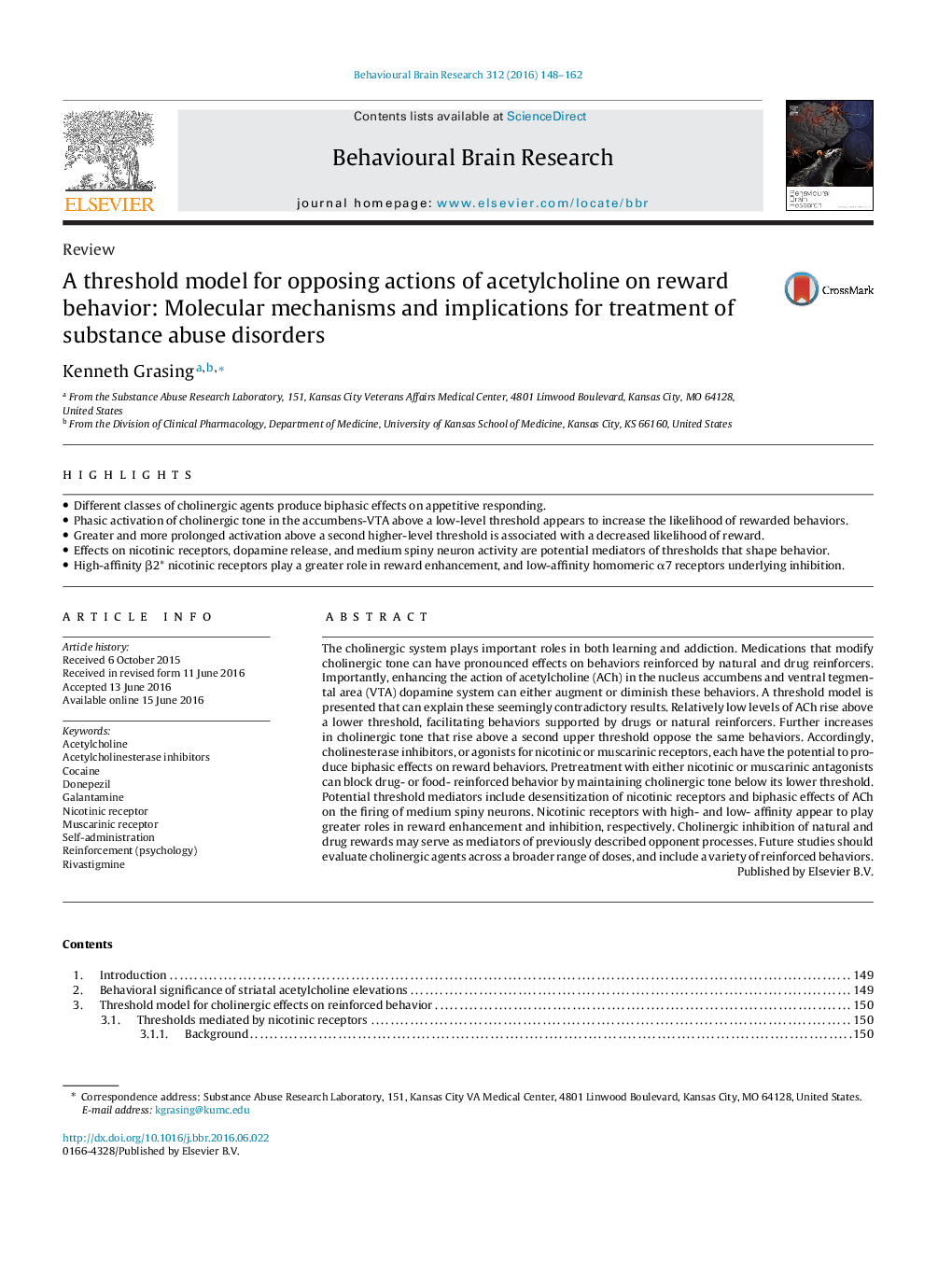| Article ID | Journal | Published Year | Pages | File Type |
|---|---|---|---|---|
| 4312049 | Behavioural Brain Research | 2016 | 15 Pages |
•Different classes of cholinergic agents produce biphasic effects on appetitive responding.•Phasic activation of cholinergic tone in the accumbens-VTA above a low-level threshold appears to increase the likelihood of rewarded behaviors.•Greater and more prolonged activation above a second higher-level threshold is associated with a decreased likelihood of reward.•Effects on nicotinic receptors, dopamine release, and medium spiny neuron activity are potential mediators of thresholds that shape behavior.•High-affinity β2* nicotinic receptors play a greater role in reward enhancement, and low-affinity homomeric α7 receptors underlying inhibition.
The cholinergic system plays important roles in both learning and addiction. Medications that modify cholinergic tone can have pronounced effects on behaviors reinforced by natural and drug reinforcers. Importantly, enhancing the action of acetylcholine (ACh) in the nucleus accumbens and ventral tegmental area (VTA) dopamine system can either augment or diminish these behaviors. A threshold model is presented that can explain these seemingly contradictory results. Relatively low levels of ACh rise above a lower threshold, facilitating behaviors supported by drugs or natural reinforcers. Further increases in cholinergic tone that rise above a second upper threshold oppose the same behaviors. Accordingly, cholinesterase inhibitors, or agonists for nicotinic or muscarinic receptors, each have the potential to produce biphasic effects on reward behaviors. Pretreatment with either nicotinic or muscarinic antagonists can block drug- or food- reinforced behavior by maintaining cholinergic tone below its lower threshold. Potential threshold mediators include desensitization of nicotinic receptors and biphasic effects of ACh on the firing of medium spiny neurons. Nicotinic receptors with high- and low- affinity appear to play greater roles in reward enhancement and inhibition, respectively. Cholinergic inhibition of natural and drug rewards may serve as mediators of previously described opponent processes. Future studies should evaluate cholinergic agents across a broader range of doses, and include a variety of reinforced behaviors.
